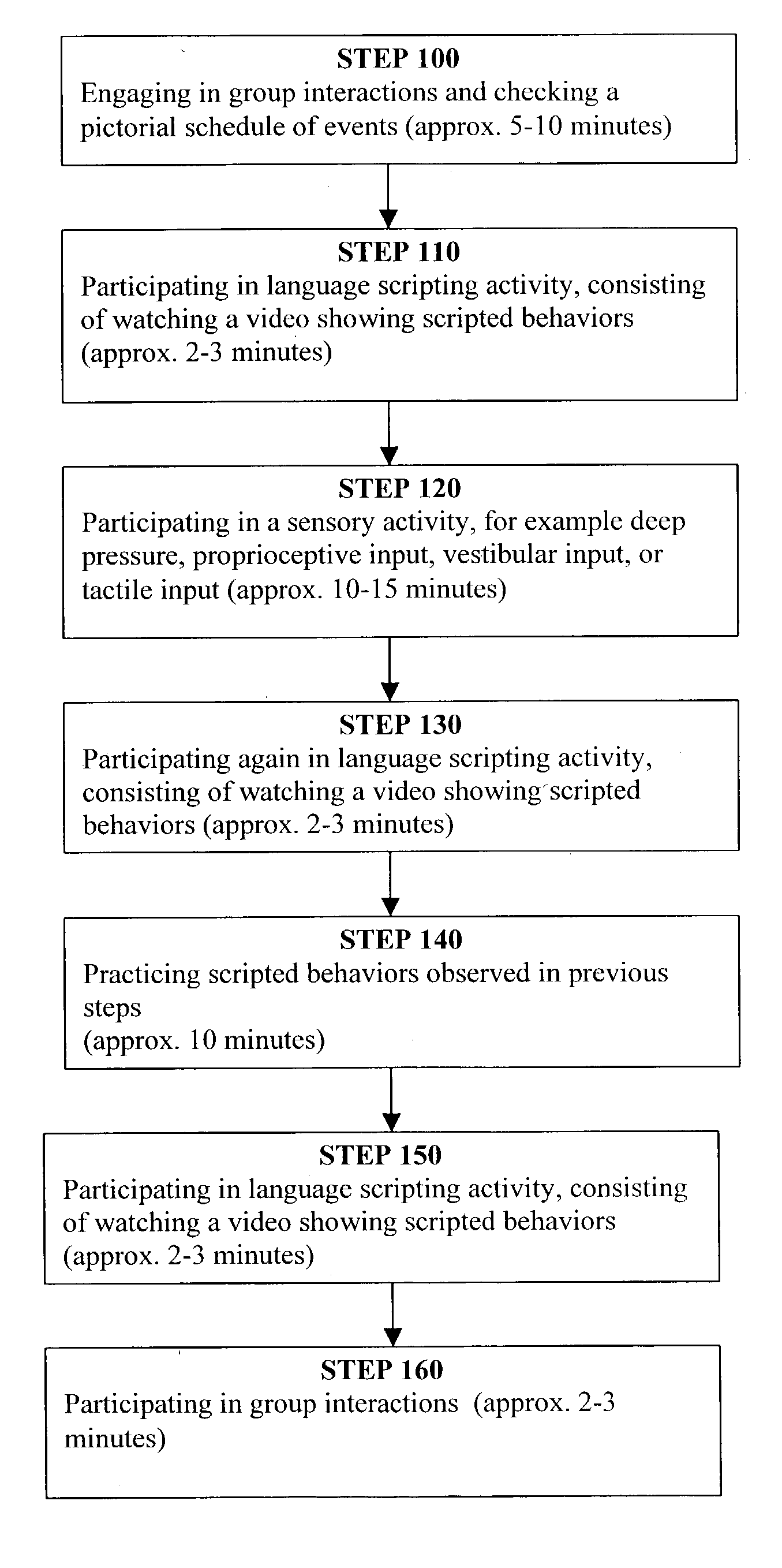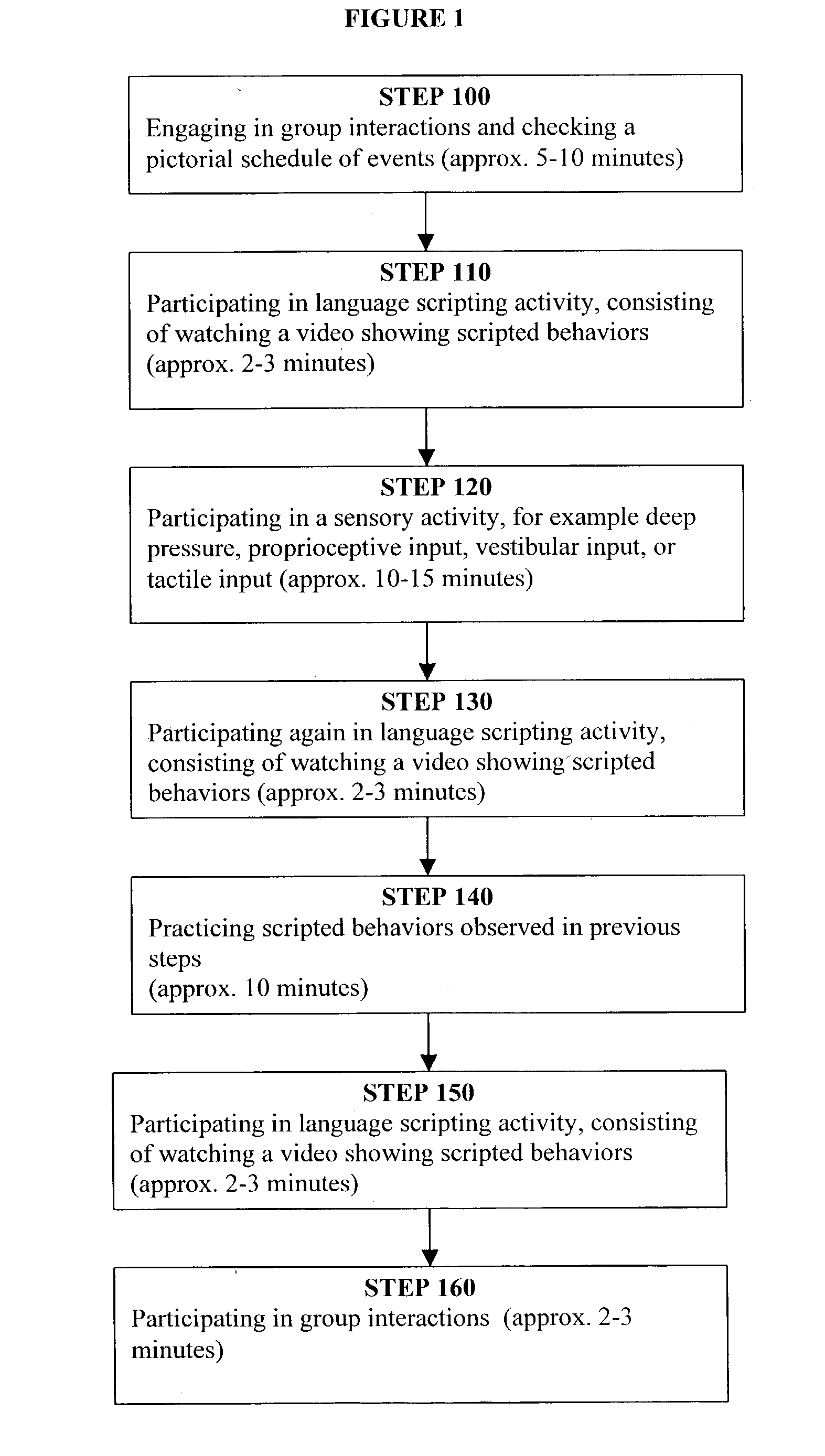Method for treating pervasive development disorder
a pervasive development disorder and treatment method technology, applied in the field of therapy based methods, can solve the problems of pdd negatively affecting the ability of children to interpret, affecting the ability of children to learn,
- Summary
- Abstract
- Description
- Claims
- Application Information
AI Technical Summary
Benefits of technology
Problems solved by technology
Method used
Image
Examples
Embodiment Construction
[0008]While the present invention is susceptible of embodiment in various forms, there is shown in the drawings and will hereinafter be described a presently preferred embodiment with the understanding that the present disclosure is to be considered an exemplification of the invention and is not intended to limit the invention to the specific embodiment illustrated.
[0009]It should be further understood that the title of this section of this specification, namely “Detailed Description Of The Invention,” relates to a requirement of the United States Patent Office, and does not imply, nor should be inferred to limit the subject matter disclosed herein.
[0010]All patents referred to herein are incorporated herein by reference.
[0011]In the present disclosure, the words “a” or “an” are to be taken to include both the singular and the plural. Conversely, and reference to plural items shall, where appropriate, include the singular.
[0012]The invention provides a method for treating various de...
PUM
 Login to View More
Login to View More Abstract
Description
Claims
Application Information
 Login to View More
Login to View More - R&D
- Intellectual Property
- Life Sciences
- Materials
- Tech Scout
- Unparalleled Data Quality
- Higher Quality Content
- 60% Fewer Hallucinations
Browse by: Latest US Patents, China's latest patents, Technical Efficacy Thesaurus, Application Domain, Technology Topic, Popular Technical Reports.
© 2025 PatSnap. All rights reserved.Legal|Privacy policy|Modern Slavery Act Transparency Statement|Sitemap|About US| Contact US: help@patsnap.com


